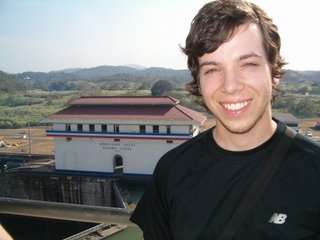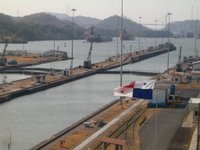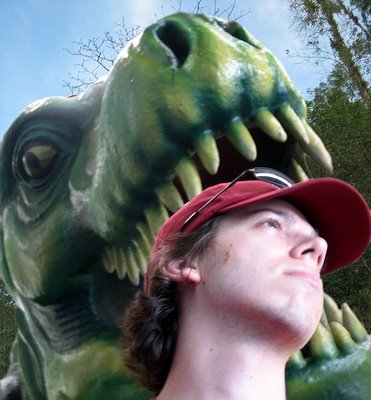
Saturday, March 18
With all our preparation for the island, we still hadn't visited Panama's most popular tourist attraction: the Canal. We had driven near and across the Canal countless times as we zigzagged all over the city and down to Santa Catalina, but we hadn't made it to Miraflores Locks and the Canal Museum, the tourist trap that charges you money and tells you official information about the construction of the Canal.
I won't get into the details and about how the Canal actually functions. One, because I don't know all that much about it. Two, because I don't have a mathematical mind; I marvel at the sheer magnitude of the task, but it never gets into numbers or nuts and bolts. Three, because information about the Canal is widely disseminated across the internet.
But I will say that the Canal is a fascinating feat of engineering and that it's worth the $8 to visit the museum and find out more about it. I don't think it's worth coming to Panama just to visit the Canal. The weather is amazing. Why waste daylight watching ships going up and down when you could explore an island or visit an outdoor market? If you're here, plan a day for the Canal, but please don't limit yourself to it.

The museum is built vertically, boasting four floors of exhibits about the Canal and Panama. After each section, you go up another escalator to the next level until finally, you reach an observation deck on the highest level. From there, we checked out the locks and took pictures of the countryside and more inclusive views of the Canal.
There, we met a group of college students from Texas A&M who had come to do mission work near David, a city in the western part of Panama. They came with a missions organization called Global Missions Fellowship (although I think they're in the process of changing their name). This ministry focuses mainly on church-planting among the unreached. According to the team leader, mission teams come in not to do work that will deteriorate as soon as they leave, but to train and inspire the native people of the region to reach their own with the Gospel of Christ.
In an era where performance-based Christianity is all too common, many American churches gauge the success of mission trips by the number of decisions for Christ. While it's amazing to see someone come to know Jesus, I think too much emphasis is put on the Americans doing the witnessing and how well they were able to round up new converts. Sometimes it seems like we have a quota to meet, like we want to hear people pray a prayer so that we can feel good about ourselves, not so their lives can be changed. We want to make statistics, not disciples. It's refreshing to see a missions organization that understands that the best thing a short-term team can do is contribute to the work God's already doing in an area and then trust him to bring a harvest from their seed through the workers on who permanently live among the people they're trying to reach.
Most of the college students on this trip are part of a ministry at Texas A&M called Breakaway. A few of them asked us about Coiba, mostly wanting to know how we were crazy enough to go on this expedition. We just blamed it on Chuck.
After the Canal, we hit up Quizno's subs for dinner. I felt like I was betraying Blimpie (my current employer), but I didn't feel too guilty. There's only one Blimpie left in my hometown Columbus, Ga., so how can I expect to find one in Panama?
This was Kevin's last day on the trip. He was set to fly out at 8:30 a.m., so we returned to the hotel early to give him time to pack and rest. Chuck, Brad, and I made plans to head out to El Valle de Anton after Chuck took Kevin to the airport in the morning.

2 comments:
If you think the Panama Canal and its weather is great -- you ought to see the Penobscot River and Maine in the summer.
Smile!
"Hi, my name's Bill Shorey and I love Maine!" Hahahaha.
Post a Comment